当前位置:网站首页>FFmpeg源码分析:avformat_open_input
FFmpeg源码分析:avformat_open_input
2022-08-04 05:25:00 【vivianluomin】
avformat_open_input(),该函数用于打开多媒体数据并且获取一些信息,它的声明位于libavformat/avformat.h:
/** * Open an input stream and read the header. The codecs are not opened. * 打开输入流,并且读取header。codecs不会被打开。 * The stream must be closed with avformat_close_input(). * 输入流必须用avformat_close_input()来关闭 * * @param ps Pointer to user-supplied AVFormatContext (allocated by avformat_alloc_context). * May be a pointer to NULL, in which case an AVFormatContext is allocated by this * function and written into ps. * Note that a user-supplied AVFormatContext will be freed on failure. * * * @param url URL of the stream to open. * @param fmt If non-NULL, this parameter forces a specific input format. * Otherwise the format is autodetected. * @param options A dictionary filled with AVFormatContext and demuxer-private options. * On return this parameter will be destroyed and replaced with a dict containing * options that were not found. May be NULL. * * @return 0 on success, a negative AVERROR on failure. * * @note If you want to use custom IO, preallocate the format context and set its pb field. */
int avformat_open_input(AVFormatContext **ps, const char *url, AVInputFormat *fmt, AVDictionary **options);
它的定义在libavformat/utils.c中:
int avformat_open_input(AVFormatContext **ps, const char *filename,
AVInputFormat *fmt, AVDictionary **options)
{
AVFormatContext *s = *ps;
int i, ret = 0;
AVDictionary *tmp = NULL;
ID3v2ExtraMeta *id3v2_extra_meta = NULL;
if (!s && !(s = avformat_alloc_context())) //如果s没有初始化,先初始化s
return AVERROR(ENOMEM);
if (!s->av_class) {
av_log(NULL, AV_LOG_ERROR, "Input context has not been properly allocated by avformat_alloc_context() and is not NULL either\n");
return AVERROR(EINVAL);
}
if (fmt)
s->iformat = fmt;
if (options)
av_dict_copy(&tmp, *options, 0);
if (s->pb) // must be before any goto fail
s->flags |= AVFMT_FLAG_CUSTOM_IO;
if ((ret = av_opt_set_dict(s, &tmp)) < 0)
goto fail;
if (!(s->url = av_strdup(filename ? filename : ""))) {
ret = AVERROR(ENOMEM);
goto fail;
}
#if FF_API_FORMAT_FILENAME
FF_DISABLE_DEPRECATION_WARNINGS
av_strlcpy(s->filename, filename ? filename : "", sizeof(s->filename));
FF_ENABLE_DEPRECATION_WARNINGS
#endif
// 1. 重点在看这里:
if ((ret = init_input(s, filename, &tmp)) < 0)
goto fail;
s->probe_score = ret;
if (!s->protocol_whitelist && s->pb && s->pb->protocol_whitelist) {
s->protocol_whitelist = av_strdup(s->pb->protocol_whitelist);
if (!s->protocol_whitelist) {
ret = AVERROR(ENOMEM);
goto fail;
}
}
if (!s->protocol_blacklist && s->pb && s->pb->protocol_blacklist) {
s->protocol_blacklist = av_strdup(s->pb->protocol_blacklist);
if (!s->protocol_blacklist) {
ret = AVERROR(ENOMEM);
goto fail;
}
}
if (s->format_whitelist && av_match_list(s->iformat->name, s->format_whitelist, ',') <= 0) {
av_log(s, AV_LOG_ERROR, "Format not on whitelist \'%s\'\n", s->format_whitelist);
ret = AVERROR(EINVAL);
goto fail;
}
avio_skip(s->pb, s->skip_initial_bytes);
/* Check filename in case an image number is expected. */
if (s->iformat->flags & AVFMT_NEEDNUMBER) {
if (!av_filename_number_test(filename)) {
ret = AVERROR(EINVAL);
goto fail;
}
}
s->duration = s->start_time = AV_NOPTS_VALUE;
/* Allocate private data. */
if (s->iformat->priv_data_size > 0) {
if (!(s->priv_data = av_mallocz(s->iformat->priv_data_size))) {
ret = AVERROR(ENOMEM);
goto fail;
}
if (s->iformat->priv_class) {
*(const AVClass **) s->priv_data = s->iformat->priv_class;
av_opt_set_defaults(s->priv_data);
if ((ret = av_opt_set_dict(s->priv_data, &tmp)) < 0)
goto fail;
}
}
/* e.g. AVFMT_NOFILE formats will not have a AVIOContext */
if (s->pb)
ff_id3v2_read_dict(s->pb, &s->internal->id3v2_meta, ID3v2_DEFAULT_MAGIC, &id3v2_extra_meta);
if (!(s->flags&AVFMT_FLAG_PRIV_OPT) && s->iformat->read_header)
//重点2
if ((ret = s->iformat->read_header(s)) < 0)
goto fail;
if (!s->metadata) {
s->metadata = s->internal->id3v2_meta;
s->internal->id3v2_meta = NULL;
} else if (s->internal->id3v2_meta) {
int level = AV_LOG_WARNING;
if (s->error_recognition & AV_EF_COMPLIANT)
level = AV_LOG_ERROR;
av_log(s, level, "Discarding ID3 tags because more suitable tags were found.\n");
av_dict_free(&s->internal->id3v2_meta);
if (s->error_recognition & AV_EF_EXPLODE)
return AVERROR_INVALIDDATA;
}
if (id3v2_extra_meta) {
if (!strcmp(s->iformat->name, "mp3") || !strcmp(s->iformat->name, "aac") ||
!strcmp(s->iformat->name, "tta")) {
if ((ret = ff_id3v2_parse_apic(s, &id3v2_extra_meta)) < 0)
goto fail;
if ((ret = ff_id3v2_parse_chapters(s, &id3v2_extra_meta)) < 0)
goto fail;
if ((ret = ff_id3v2_parse_priv(s, &id3v2_extra_meta)) < 0)
goto fail;
} else
av_log(s, AV_LOG_DEBUG, "demuxer does not support additional id3 data, skipping\n");
}
ff_id3v2_free_extra_meta(&id3v2_extra_meta);
if ((ret = avformat_queue_attached_pictures(s)) < 0)
goto fail;
if (!(s->flags&AVFMT_FLAG_PRIV_OPT) && s->pb && !s->internal->data_offset)
s->internal->data_offset = avio_tell(s->pb);
s->internal->raw_packet_buffer_remaining_size = RAW_PACKET_BUFFER_SIZE;
update_stream_avctx(s);
for (i = 0; i < s->nb_streams; i++)
s->streams[i]->internal->orig_codec_id = s->streams[i]->codecpar->codec_id;
if (options) {
av_dict_free(options);
*options = tmp;
}
*ps = s;
return 0;
fail:
ff_id3v2_free_extra_meta(&id3v2_extra_meta);
av_dict_free(&tmp);
if (s->pb && !(s->flags & AVFMT_FLAG_CUSTOM_IO))
avio_closep(&s->pb);
avformat_free_context(s);
*ps = NULL;
return ret;
}
重点1: init_input:
它主要的工作就是打开视频数据并且探测视频的格式。定义位于libavformat\utils.c
/* Open input file and probe the format if necessary. */
static int init_input(AVFormatContext *s, const char *filename,
AVDictionary **options)
{
int ret;
AVProbeData pd = {
filename, NULL, 0 };
//用于判断一个AVInputFormat是否合适,
//AVPROBE_SCORE_RETRY = AVPROBE_SCORE_MAX/4 = 25
int score = AVPROBE_SCORE_RETRY;
//当使用了自定义的AVIOContext的时候,
if (s->pb) {
s->flags |= AVFMT_FLAG_CUSTOM_IO;
//如果指定了AVInputFormat就直接返回;
//否则就调用av_probe_input_buffer2 重点3
if (!s->iformat)
return av_probe_input_buffer2(s->pb, &s->iformat, filename,
s, 0, s->format_probesize);
else if (s->iformat->flags & AVFMT_NOFILE)
av_log(s, AV_LOG_WARNING, "Custom AVIOContext makes no sense and "
"will be ignored with AVFMT_NOFILE format.\n");
return 0;
}
//一般情况下,如果指定了AVInputFormat,就直接返回。
//如果没有指定,就调用av_probe_input_format2,根据文件路径推测AVInputFormat,重点4.
if ((s->iformat && s->iformat->flags & AVFMT_NOFILE) ||
(!s->iformat && (s->iformat = av_probe_input_format2(&pd, 0, &score))))
return score;
//如果发现通过文件路径判断不出文件格式,那么就调用io_open来探测文件格式 重点4
if ((ret = s->io_open(s, &s->pb, filename, AVIO_FLAG_READ | s->avio_flags, options)) < 0)
return ret;
if (s->iformat)
return 0;
//最后调用av_probe_input_buffer2来推测AVInputFormat 重点3
return av_probe_input_buffer2(s->pb, &s->iformat, filename,
s, 0, s->format_probesize);
}
下面就一个一个重点的看
重点3:av_probe_input_buffer2
根据媒体数据推测媒体数据的AVInput,声明位于libavformat\avformat.h:
/** * Probe a bytestream to determine the input format. Each time a probe returns * with a score that is too low, the probe buffer size is increased and another * attempt is made. When the maximum probe size is reached, the input format * with the highest score is returned. * 探测字节流以确定输入格式。 每次探测返回的分数太低时,探测缓冲区大小都会增加, * 并进行另一次尝试。 达到最大探测大小时,将返回分数最高的输入格式。 * * @param pb the bytestream to probe 用于读取数据的 * @param fmt the input format is put here 输出推测的AVInputFormat * @param url the url of the stream * @param logctx the log context * @param offset the offset within the bytestream to probe from * @param max_probe_size the maximum probe buffer size (zero for default) * @return the score in case of success, a negative value corresponding to an * the maximal score is AVPROBE_SCORE_MAX * AVERROR code otherwise */
int av_probe_input_buffer2(AVIOContext *pb, AVInputFormat **fmt,
const char *url, void *logctx,
unsigned int offset, unsigned int max_probe_size);
定义位于libavformat\format.c:
int av_probe_input_buffer2(AVIOContext *pb, AVInputFormat **fmt,
const char *filename, void *logctx,
unsigned int offset, unsigned int max_probe_size)
{
AVProbeData pd = {
filename ? filename : "" };
uint8_t *buf = NULL;
int ret = 0, probe_size, buf_offset = 0;
int score = 0;
int ret2;
if (!max_probe_size)
max_probe_size = PROBE_BUF_MAX;
else if (max_probe_size < PROBE_BUF_MIN) {
av_log(logctx, AV_LOG_ERROR,
"Specified probe size value %u cannot be < %u\n", max_probe_size, PROBE_BUF_MIN);
return AVERROR(EINVAL);
}
if (offset >= max_probe_size)
return AVERROR(EINVAL);
if (pb->av_class) {
uint8_t *mime_type_opt = NULL;
char *semi;
av_opt_get(pb, "mime_type", AV_OPT_SEARCH_CHILDREN, &mime_type_opt);
pd.mime_type = (const char *)mime_type_opt;
semi = pd.mime_type ? strchr(pd.mime_type, ';') : NULL;
if (semi) {
*semi = '\0';
}
}
for (probe_size = PROBE_BUF_MIN; probe_size <= max_probe_size && !*fmt;
probe_size = FFMIN(probe_size << 1,
FFMAX(max_probe_size, probe_size + 1))) {
score = probe_size < max_probe_size ? AVPROBE_SCORE_RETRY : 0;
/* Read probe data. */
if ((ret = av_reallocp(&buf, probe_size + AVPROBE_PADDING_SIZE)) < 0)
goto fail;
//读取数据
if ((ret = avio_read(pb, buf + buf_offset,
probe_size - buf_offset)) < 0) {
/* Fail if error was not end of file, otherwise, lower score. */
if (ret != AVERROR_EOF)
goto fail;
score = 0;
ret = 0; /* error was end of file, nothing read */
}
buf_offset += ret;
if (buf_offset < offset)
continue;
pd.buf_size = buf_offset - offset;
pd.buf = &buf[offset];
memset(pd.buf + pd.buf_size, 0, AVPROBE_PADDING_SIZE);
/* Guess file format. */
//推测数据:重点5
*fmt = av_probe_input_format2(&pd, 1, &score);
if (*fmt) {
/* This can only be true in the last iteration. */
if (score <= AVPROBE_SCORE_RETRY) {
av_log(logctx, AV_LOG_WARNING,
"Format %s detected only with low score of %d, "
"misdetection possible!\n", (*fmt)->name, score);
} else
av_log(logctx, AV_LOG_DEBUG,
"Format %s probed with size=%d and score=%d\n",
(*fmt)->name, probe_size, score);
#if 0
FILE *f = fopen("probestat.tmp", "ab");
fprintf(f, "probe_size:%d format:%s score:%d filename:%s\n", probe_size, (*fmt)->name, score, filename);
fclose(f);
#endif
}
}
if (!*fmt)
ret = AVERROR_INVALIDDATA;
fail:
/* Rewind. Reuse probe buffer to avoid seeking. */
ret2 = ffio_rewind_with_probe_data(pb, &buf, buf_offset);
if (ret >= 0)
ret = ret2;
av_freep(&pd.mime_type);
return ret < 0 ? ret : score;
}
在这段函数中,我们只需要关注重点4,在读取完数据后推测数据。
重点5:av_probe_input_format2
声明在libavformat\avformat.h:
/** * Guess the file format. * * @param pd data to be probed * @param is_opened Whether the file is already opened; determines whether * demuxers with or without AVFMT_NOFILE are probed. * @param score_max A probe score larger that this is required to accept a * detection, the variable is set to the actual detection * score afterwards. * If the score is <= AVPROBE_SCORE_MAX / 4 it is recommended * to retry with a larger probe buffer. */
AVInputFormat *av_probe_input_format2(AVProbeData *pd, int is_opened, int *score_max);
其中的结构体AVProbeData,用于存储输入文件的一些信息:
/** * This structure contains the data a format has to probe a file. */
typedef struct AVProbeData {
const char *filename;
unsigned char *buf; /**< Buffer must have AVPROBE_PADDING_SIZE of extra allocated bytes filled with zero. */
int buf_size; /**< Size of buf except extra allocated bytes */
const char *mime_type; /**< mime_type, when known. */
} AVProbeData;
av_probe_input_format2()函数的定义位于libavformat\format.c:
AVInputFormat *av_probe_input_format2(AVProbeData *pd, int is_opened, int *score_max)
{
int score_ret;
AVInputFormat *fmt = av_probe_input_format3(pd, is_opened, &score_ret);
if (score_ret > *score_max) {
*score_max = score_ret;
return fmt;
} else
return NULL;
}
可以看到,其实主要是调用了av_probe_input_format3函数:
AVInputFormat *av_probe_input_format3(AVProbeData *pd, int is_opened,
int *score_ret)
{
AVProbeData lpd = *pd;
const AVInputFormat *fmt1 = NULL;
AVInputFormat *fmt = NULL;
int score, score_max = 0;
void *i = 0;
const static uint8_t zerobuffer[AVPROBE_PADDING_SIZE];
enum nodat {
NO_ID3,
ID3_ALMOST_GREATER_PROBE,
ID3_GREATER_PROBE,
ID3_GREATER_MAX_PROBE,
} nodat = NO_ID3;
if (!lpd.buf)
lpd.buf = (unsigned char *) zerobuffer;
if (lpd.buf_size > 10 && ff_id3v2_match(lpd.buf, ID3v2_DEFAULT_MAGIC)) {
int id3len = ff_id3v2_tag_len(lpd.buf);
if (lpd.buf_size > id3len + 16) {
if (lpd.buf_size < 2LL*id3len + 16)
nodat = ID3_ALMOST_GREATER_PROBE;
lpd.buf += id3len;
lpd.buf_size -= id3len;
} else if (id3len >= PROBE_BUF_MAX) {
nodat = ID3_GREATER_MAX_PROBE;
} else
nodat = ID3_GREATER_PROBE;
}
//遍历FFmpeg中所有的AVInputFormat
while ((fmt1 = av_demuxer_iterate(&i))) {
if (!is_opened == !(fmt1->flags & AVFMT_NOFILE) && strcmp(fmt1->name, "image2"))
continue;
score = 0;
//如果AVInputFormat包含read_probe
if (fmt1->read_probe) {
//获取匹配分数,重点6
score = fmt1->read_probe(&lpd);
if (score)
av_log(NULL, AV_LOG_TRACE, "Probing %s score:%d size:%d\n", fmt1->name, score, lpd.buf_size);
//比较输入媒体的扩展名和AVIputFormat的扩展名是否匹配,重点7
if (fmt1->extensions && av_match_ext(lpd.filename, fmt1->extensions)) {
switch (nodat) {
case NO_ID3:
score = FFMAX(score, 1);
break;
case ID3_GREATER_PROBE:
case ID3_ALMOST_GREATER_PROBE:
score = FFMAX(score, AVPROBE_SCORE_EXTENSION / 2 - 1);
break;
case ID3_GREATER_MAX_PROBE:
score = FFMAX(score, AVPROBE_SCORE_EXTENSION);
break;
}
}
} else if (fmt1->extensions) {
//比较输入媒体的扩展名和AVIputFormat的扩展名是否匹配,重点7
if (av_match_ext(lpd.filename, fmt1->extensions))
score = AVPROBE_SCORE_EXTENSION;//50
}
//比较输入媒体的mime_type和AVInputFormat的mime_type是否匹配,重点 8
if (av_match_name(lpd.mime_type, fmt1->mime_type)) {
if (AVPROBE_SCORE_MIME > score) {
av_log(NULL, AV_LOG_DEBUG, "Probing %s score:%d increased to %d due to MIME type\n", fmt1->name, score, AVPROBE_SCORE_MIME);
score = AVPROBE_SCORE_MIME;//75
}
}
//比较分数,得到最合适的AVInputFormat
if (score > score_max) {
score_max = score;
fmt = (AVInputFormat*)fmt1;
} else if (score == score_max)
fmt = NULL;
}
if (nodat == ID3_GREATER_PROBE)
score_max = FFMIN(AVPROBE_SCORE_EXTENSION / 2 - 1, score_max);
*score_ret = score_max;
return fmt;
}
重点6:
read_probe,用于获得匹配函数的函数指针,不同的封装格式包含不同的实现函数。以FLV封装格式为例:定义在libavformat\flvdec.c
AVInputFormat ff_flv_demuxer = {
.name = "flv",
.long_name = NULL_IF_CONFIG_SMALL("FLV (Flash Video)"),
.priv_data_size = sizeof(FLVContext),
.read_probe = flv_probe,
.read_header = flv_read_header,
.read_packet = flv_read_packet,
.read_seek = flv_read_seek,
.read_close = flv_read_close,
.extensions = "flv",
.priv_class = &flv_class,
};
其中read_probe对应的是flv_probe:
static int flv_probe(AVProbeData *p)
{
return probe(p, 0);
}
可以看到,其实就是调用了probe函数:
static int probe(AVProbeData *p, int live)
{
const uint8_t *d = p->buf;
//偏移5
unsigned offset = AV_RB32(d + 5);
if (d[0] == 'F' &&
d[1] == 'L' &&
d[2] == 'V' &&
d[3] < 5 && d[5] == 0 &&
offset + 100 < p->buf_size &&
offset > 8) {
//比较前10个字节,对于FLV文件来说,最终is_live 为 0
int is_live = !memcmp(d + offset + 40, "NGINX RTMP", 10);
if (live == is_live)
return AVPROBE_SCORE_MAX;//100
}
return 0;
}
该函数做了以下工作:
- 获取第6至第9字节的数据,并且做大小端的转换,然后存入offset变量。之所以要进行大小端转换是因为FLV是以“大端”方式存储数据,而操作系统是以“小端”方式存储数据,这一转换主要通过AV_RB32()函数实现。AV_RB32()是一个宏定义,其对应的函数是av_bswap32()。
- 检查开头3个字符(Signature)是否为“FLV”。
- 第4个字节(Version)小于5。
- 第6个字节(Headersize的第1个字节?)为0。
- offset取值大于8。
对照着FLV文件头的格式:
重点7:av_match_ext
用于比较文件的后缀。定义在format.c中:
int av_match_ext(const char *filename, const char *extensions)
{
const char *ext;
if (!filename)
return 0;
//得到‘.‘最后出现的位置
ext = strrchr(filename, '.');
if (ext)
return av_match_name(ext + 1, extensions);
return 0;
}
可以看到,其实最后调用的还是av_match_name函数
重点8:av_match_name
用于比较两个格式的名称,定义于libavutil/avstring.c:
int av_match_name(const char *name, const char *names)
{
const char *p;
int len, namelen;
if (!name || !names)
return 0;
namelen = strlen(name);
while (*names) {
int negate = '-' == *names;
p = strchr(names, ',');
if (!p)
p = names + strlen(names);
names += negate;
len = FFMAX(p - names, namelen);
if (!av_strncasecmp(name, names, len) || !strncmp("ALL", names, FFMAX(3, p - names)))
return !negate;
names = p + (*p == ',');
}
return 0;
}
上述函数还有一点需要注意,其中使用了一个while()循环,用于搜索“,”。这是因为FFmpeg中有些格式是对应多种格式名称的,例如MKV格式的解复用器(Demuxer)的定义如下。
AVInputFormat ff_matroska_demuxer = {
.name = "matroska,webm",
.long_name = NULL_IF_CONFIG_SMALL("Matroska / WebM"),
.extensions = "mkv,mk3d,mka,mks",
.priv_data_size = sizeof(MatroskaDemuxContext),
.read_probe = matroska_probe,
.read_header = matroska_read_header,
.read_packet = matroska_read_packet,
.read_close = matroska_read_close,
.read_seek = matroska_read_seek,
.mime_type = "audio/webm,audio/x-matroska,video/webm,video/x-matroska"
};
从代码可以看出,ff_matroska_demuxer中的name字段对应“matroska,webm”,mime_type字段对应“audio/webm,audio/x-matroska,video/webm,video/x-matroska”。av_match_name()函数对于这样的字符串,会把它按照“,”截断成一个个的名称,然后一一进行比较。
重点4 io_open
它是AVFormatContext在初始化时定义的函数:
static void avformat_get_context_defaults(AVFormatContext *s)
{
memset(s, 0, sizeof(AVFormatContext));
s->av_class = &av_format_context_class;
s->io_open = io_open_default;
s->io_close = io_close_default;
av_opt_set_defaults(s);
}
io_open_default定义在avformat/options.c中:
```java
static int io_open_default(AVFormatContext *s, AVIOContext **pb,
const char *url, int flags, AVDictionary **options)
{
int loglevel;
if (!strcmp(url, s->url) ||
s->iformat && !strcmp(s->iformat->name, "image2") ||
s->oformat && !strcmp(s->oformat->name, "image2")
) {
loglevel = AV_LOG_DEBUG;
} else
loglevel = AV_LOG_INFO;
av_log(s, loglevel, "Opening \'%s\' for %s\n", url, flags & AVIO_FLAG_WRITE ? "writing" : "reading");
#if FF_API_OLD_OPEN_CALLBACKS
FF_DISABLE_DEPRECATION_WARNINGS
if (s->open_cb)
return s->open_cb(s, pb, url, flags, &s->interrupt_callback, options);
FF_ENABLE_DEPRECATION_WARNINGS
#endif
return ffio_open_whitelist(pb, url, flags, &s->interrupt_callback, options, s->protocol_whitelist, s->protocol_blacklist);
}
继续下跟:
int ffio_open_whitelist(AVIOContext **s, const char *filename, int flags,
const AVIOInterruptCB *int_cb, AVDictionary **options,
const char *whitelist, const char *blacklist
)
{
URLContext *h;
int err;
err = ffurl_open_whitelist(&h, filename, flags, int_cb, options, whitelist, blacklist, NULL);
if (err < 0)
return err;
err = ffio_fdopen(s, h);
if (err < 0) {
ffurl_close(h);
return err;
}
return 0;
}
可以看到,这个函数中,主要调用了两个函数ffurl_open_whitelist和ffio_fdopen,其中ffurl_open_whitelist用于初始化URLContext,并且打开它。ffio_fdopen用于根据URLContext初始化AVIOContext。URLContext中包含的URLProtocol完成了具体的协议读写工作。AVIOContext只是在URLContext的读写函数上加了一层包装。
重点2 AVInputFormat-> read_header()
在调用完init_input完成基本的初始化并且推测出相应的AVInputFormat之后,回调用read_header方法读取媒体文件的文件头,并且完成相关的初始化。
read_header是一个位于AVInputFormat结构体中的一个函数指针,对于不同的封装格式,回调用不同的read_header。例如,当属入的视频的封装格式为FLV的时候,会到FLV的AVInputFormat中的read_header,同样FLV的AVInputFormat定义位于libavformat\flvdec.c:
AVInputFormat ff_flv_demuxer = {
.name = "flv",
.long_name = NULL_IF_CONFIG_SMALL("FLV (Flash Video)"),
.priv_data_size = sizeof(FLVContext),
.read_probe = flv_probe,
.read_header = flv_read_header,
.read_packet = flv_read_packet,
.read_seek = flv_read_seek,
.read_close = flv_read_close,
.extensions = "flv",
.priv_class = &flv_class,
};
可以看到,read_header指向了flv_read_header函数:
static int flv_read_header(AVFormatContext *s)
{
int flags;
FLVContext *flv = s->priv_data;
int offset;
int pre_tag_size = 0;
//跳过4个字节
avio_skip(s->pb, 4);
//读取一个字节,第5个字节中的第0位和第2位,分别表示 video 与 audio 存在的情况.
flags = avio_r8(s->pb);
flv->missing_streams = flags & (FLV_HEADER_FLAG_HASVIDEO | FLV_HEADER_FLAG_HASAUDIO);
s->ctx_flags |= AVFMTCTX_NOHEADER;
//读取4个字节
offset = avio_rb32(s->pb);
avio_seek(s->pb, offset, SEEK_SET);
/* Annex E. The FLV File Format * E.3 TheFLVFileBody * Field Type Comment * PreviousTagSize0 UI32 Always 0 * */
pre_tag_size = avio_rb32(s->pb);
if (pre_tag_size) {
av_log(s, AV_LOG_WARNING, "Read FLV header error, input file is not a standard flv format, first PreviousTagSize0 always is 0\n");
}
s->start_time = 0;
flv->sum_flv_tag_size = 0;
flv->last_keyframe_stream_index = -1;
return 0;
}
总结
可以看到,avformat_open_input的主要主要就是根据输入的文件,创建AVFormatContext,根据文件的头格式,后缀找到合适的AVInputFormat,并初始化AVIOContext,完成读写协议,然后读取文件头。完成AVFormatContext的初始化。
边栏推荐
- 编程大杂烩(三)
- 【一步到位】Jenkins的安装、部署、启动(完整教程)
- C Expert Programming Chapter 5 Thinking about Linking 5.3 5 Special Secrets of Library Linking
- Resolved error: npm WARN config global `--global`, `--local` are deprecated
- 读者让我总结一波 redis 面试题,现在肝出来了
- Chapter 5 C programming expert thinking 5.4 alert Interpositioning of links
- SLSA 框架与软件供应链安全防护
- el-Select selector bottom fixed
- Performance testing with Loadrunner
- npm报错Beginning October 4, 2021, all connections to the npm registry - including for package installa
猜你喜欢
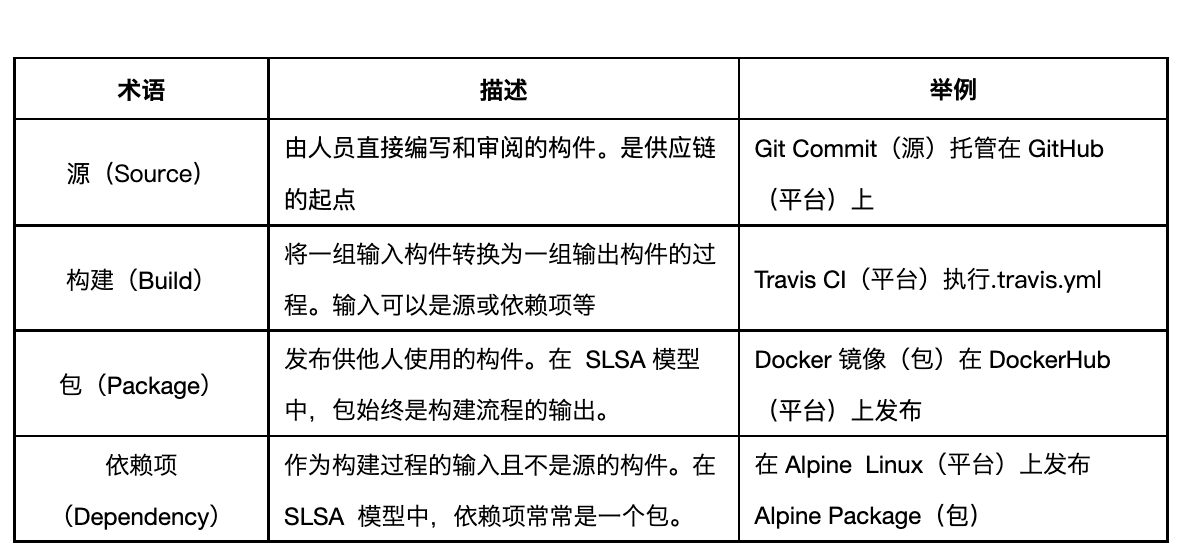
SLSA 框架与软件供应链安全防护
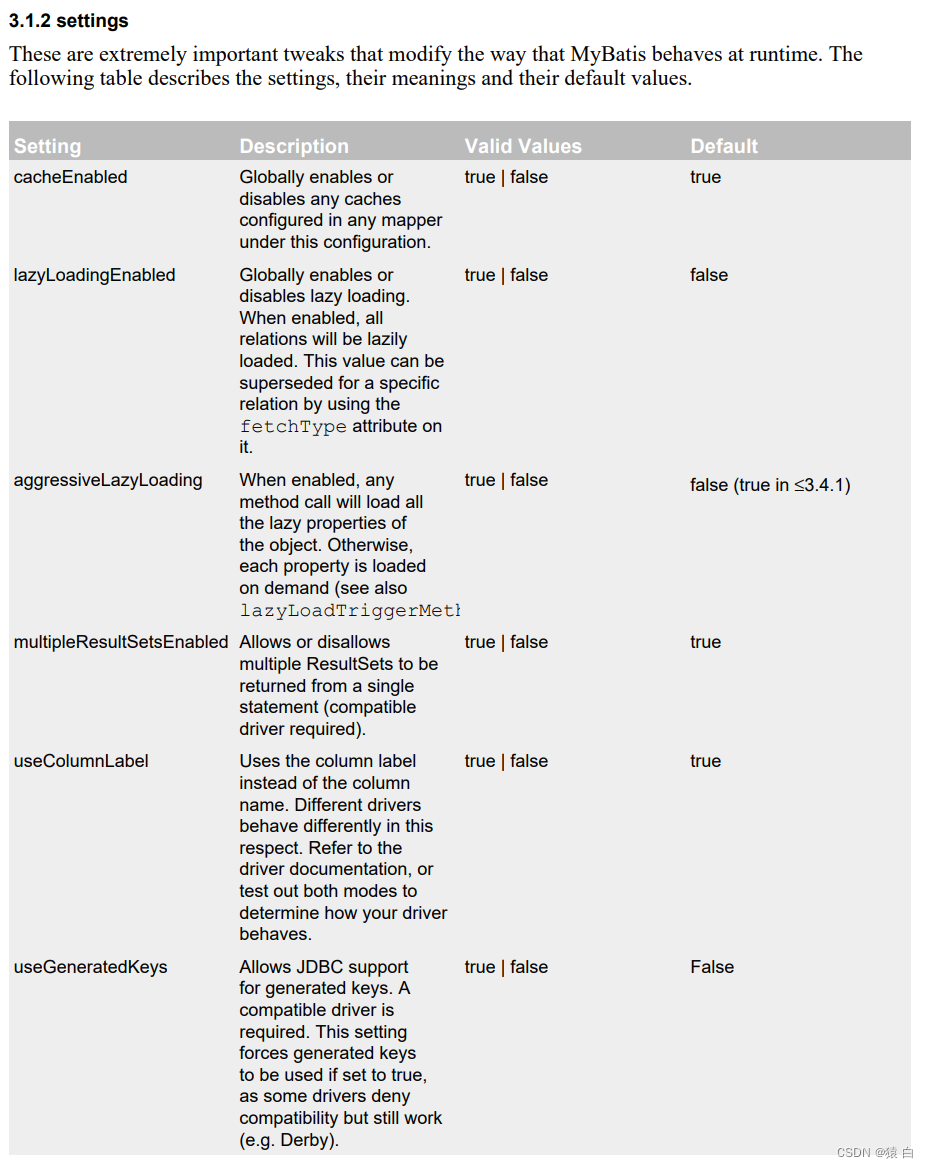
8、自定义映射resultMap

嵌入式系统驱动初级【4】——字符设备驱动基础下_并发控制
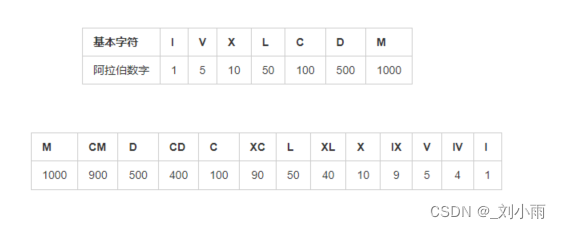
leetcode 12. Integer to Roman numeral
![[Evaluation model] Topsis method (pros and cons distance method)](/img/e7/c24241faced567f3e93f6ff3f20074.png)
[Evaluation model] Topsis method (pros and cons distance method)
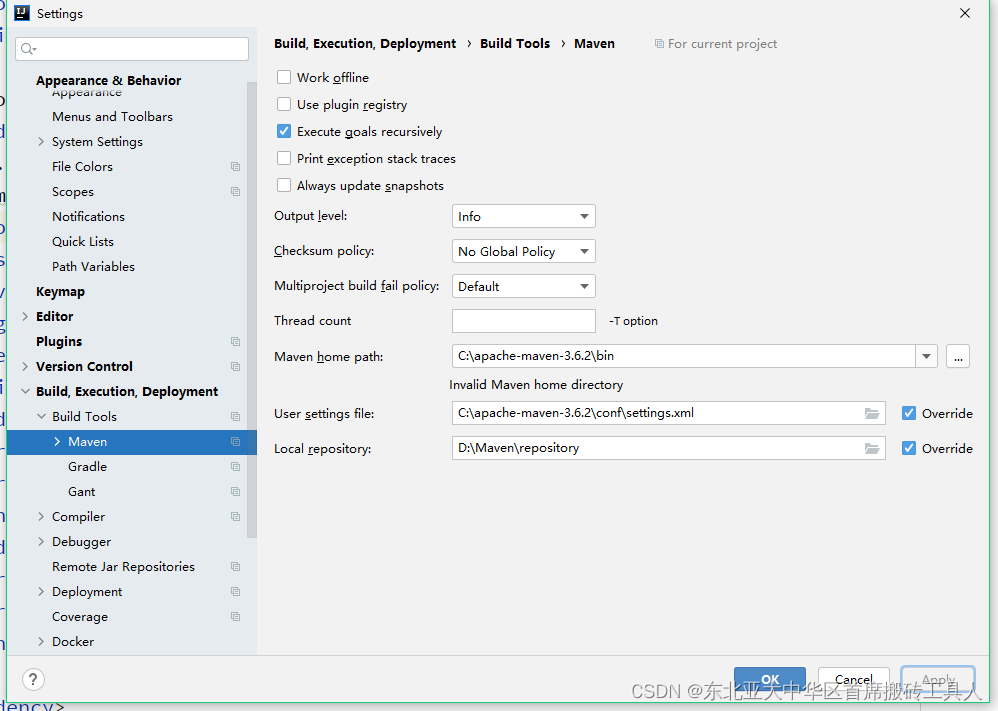
Grain Mall - Basics (Project Introduction & Project Construction)
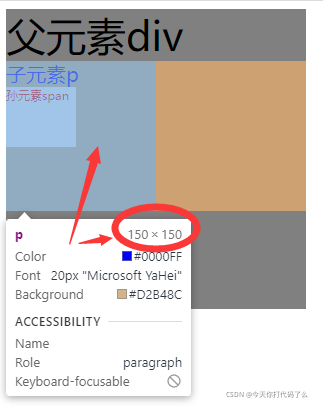
The difference between px, em, and rem
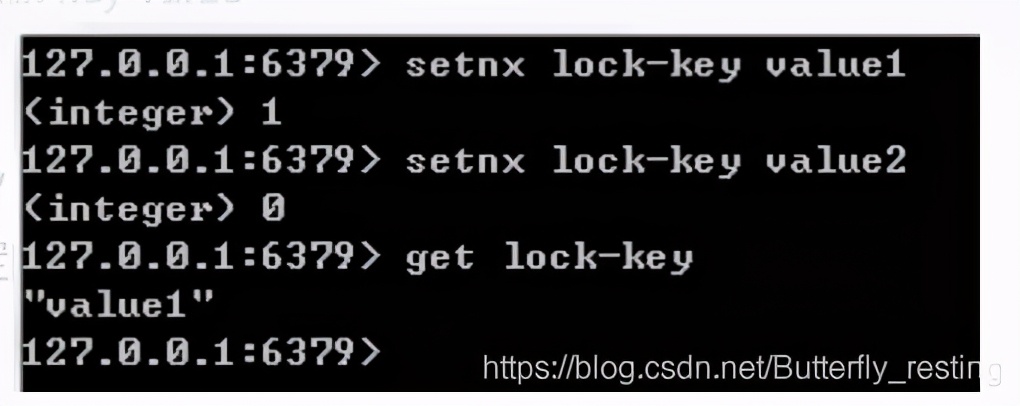
读者让我总结一波 redis 面试题,现在肝出来了
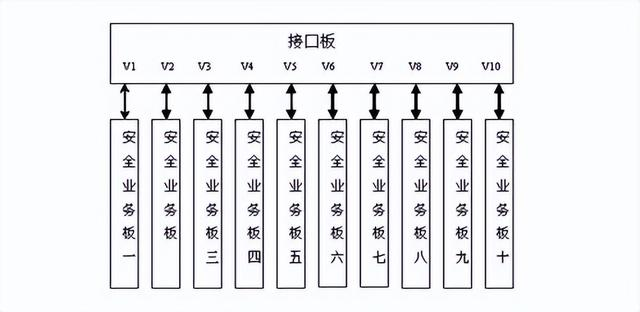
高性能高可靠性高扩展性分布式防火墙架构
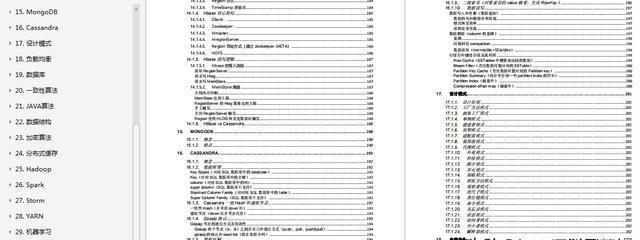
败给“MySQL”的第60天,我重振旗鼓,四面拿下蚂蚁金服offer
随机推荐
Write golang simple C2 remote control based on gRPC
BFC、IFC、GFC、FFC概念理解、布局规则、形成方法、用处浅析
力扣:70. 爬楼梯
如何将 DevSecOps 引入企业?
高性能高可靠性高扩展性分布式防火墙架构
Teenage Achievement Hackers Need These Skills
编程大杂烩(四)
The symbol table
触觉智能分享-SSD20X实现升级显示进度条
[Cocos] cc.sys.browserType可能的属性
Get the selected content of the radio box
腾讯136道高级岗面试题:多线程+算法+Redis+JVM
谷粒商城-基础篇(项目简介&项目搭建)
What is the salary of a software testing student?
What are the steps for how to develop a mall system APP?
【JS】js给对象动态添加、设置、删除属性名和属性值
部署LVS-DR群集【实验】
The 2022 PMP exam has been delayed, should we be happy or worried?
应届生软件测试薪资大概多少?
7.18 Day23----标记语言